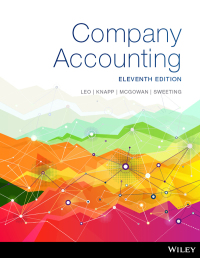



DBC, TDABC, and ABC The Bienestar Cardiology Clinic has two major activities: diagnostic and treatment. The two activities use four resources: nursing, medical technicians, cardiologists, and equipment. Detailed interviews have provided the following work distribution matrix shown below. Resources Total Activity Activity Nursing Technicians Cardiologists Equipment Time Diagnosing patients 0.70 0.80 0.40 0.60 12,000 hrs. Treating patients 0.30 0.20 0.60 0.40 8,000 hrs. Total time (hrs.) 4,000 4,000 6,000 6,000 20,000 Cost $80,000 $80,000 $320,000 $320,000 The total time estimated corresponds to practical capacity (interviewers adjusted the total time to about 80 percent of the available time). The equipment time is measured in machine hours. Thus, the total time (at practical capacity) in the system is 20,000 hours. In considering the implementation of a TDABC model, the following unit times and transaction information are also provided: Expected Activity Driver Quantity Unit Time Driver Diagnosing patients 3 hrs No. of patients 4,000 Treating patients 0.8 hr. No. of treatments 10,000 The clinic has identified three types of patients: those with no heart disease, those with mild heart disease, and those with severe heart disease. The following additional data are provided : Average Time Spent Servicing Each Patient Type (Cycle Time) Patient Type Diagnosing Patients Treating Patients No disease 2,000 0 3 hrs. Mild disease 1,500 5,000 5.6 hrs. Severe disease 500 5,000 11.0 hrs. Activity cost ? ? Required: 1. Calculate the activity costs for diagnosing and treating patients. Using the activity costs calculated, calculate the unit cost of servicing each type of patient using traditional ABC. Activity rates Diagnosing 110 Treating 36 Calculate the unit cost of servicing each type of patient using traditional ABC. Unit Cost No Disease Mild DI! Severe 2. Using TDABC-derived activity rates, calculate the unit cost of servicing each type of patient. If required round your answer to two decimal places. Activity rates Diagnosing $ Treating $ Unit Cost No Disease $ 120 Mild Severe $1 440 Feedback Check My Work 1. First, calculate the total cost of diagnosing and treating patients by multiplying the total cost of each activity by the indicated values of the resource drivers. Divide the total cost by the total number of patients served. Then use those activity rates to allocate costs to each type of patient. Divide by total number of patients served to determine unit cost. 2. Calculate Capacity Cost rate by dividing the total resource cost by the practical capacity of the resources supplied. Calculate Activity Cost by multiplying activity rate by total activity output. Divide by total number of patients served to determine unit cost. DBC, TDABC, and ABC The Bienestar Cardiology Clinic has two major activities: diagnostic and treatment. The two activities use four resources: nursing, medical technicians, cardiologists, and equipment. Detailed interviews have provided the following work distribution matrix shown below. Resources Total Activity Activity Nursing Technicians Cardiologists Equipment Time Diagnosing patients 0.70 0.80 0.40 0.60 12,000 hrs. Treating patients 0.30 0.20 0.60 0.40 8,000 hrs. Total time (hrs.) 4,000 4,000 6,000 6,000 20,000 Cost $80,000 $80,000 $320,000 $320,000 The total time estimated corresponds to practical capacity (interviewers adjusted the total time to about 80 percent of the available time). The equipment time is measured in machine hours. Thus, the total time (at practical capacity) in the system is 20,000 hours. In considering the implementation of a TDABC model, the following unit times and transaction information are also provided: Expected Activity Driver Quantity Unit Time Driver Diagnosing patients 3 hrs No. of patients 4,000 Treating patients 0.8 hr. No. of treatments 10,000 The clinic has identified three types of patients: those with no heart disease, those with mild heart disease, and those with severe heart disease. The following additional data are provided : Average Time Spent Servicing Each Patient Type (Cycle Time) Patient Type Diagnosing Patients Treating Patients No disease 2,000 0 3 hrs. Mild disease 1,500 5,000 5.6 hrs. Severe disease 500 5,000 11.0 hrs. Activity cost ? ? Required: 1. Calculate the activity costs for diagnosing and treating patients. Using the activity costs calculated, calculate the unit cost of servicing each type of patient using traditional ABC. Activity rates Diagnosing 110 Treating 36 Calculate the unit cost of servicing each type of patient using traditional ABC. Unit Cost No Disease Mild DI! Severe 2. Using TDABC-derived activity rates, calculate the unit cost of servicing each type of patient. If required round your answer to two decimal places. Activity rates Diagnosing $ Treating $ Unit Cost No Disease $ 120 Mild Severe $1 440 Feedback Check My Work 1. First, calculate the total cost of diagnosing and treating patients by multiplying the total cost of each activity by the indicated values of the resource drivers. Divide the total cost by the total number of patients served. Then use those activity rates to allocate costs to each type of patient. Divide by total number of patients served to determine unit cost. 2. Calculate Capacity Cost rate by dividing the total resource cost by the practical capacity of the resources supplied. Calculate Activity Cost by multiplying activity rate by total activity output. Divide by total number of patients served to determine unit cost










